
Science, also widely referred to as Science Magazine, is the peer-reviewed academic journal of the American Association for the Advancement of Science (AAAS) and one of the world's top academic journals. It was first published in 1880, is currently circulated weekly and has a subscriber base of around 130,000. Because institutional subscriptions and online access serve a larger audience, its estimated readership is over 400,000 people.

A lithium-ion battery or Li-ion battery is a type of rechargeable battery composed of cells in which lithium ions move from the negative electrode through an electrolyte to the positive electrode during discharge and back when charging. Li-ion cells use an intercalated lithium compound as the material at the positive electrode and typically graphite at the negative electrode. Li-ion batteries have a high energy density, no memory effect and low self-discharge. Cells can be manufactured to prioritize either energy or power density. They can however be a safety hazard since they contain flammable electrolytes and if damaged or incorrectly charged can lead to explosions and fires.

An electric vehicle (EV) is a vehicle that uses one or more electric motors for propulsion. It can be powered by a collector system, with electricity from extravehicular sources, or it can be powered autonomously by a battery. EVs include, but are not limited to, road and rail vehicles, surface and underwater vessels, electric aircraft and electric spacecraft.
The impact factor (IF) or journal impact factor (JIF) of an academic journal is a scientometric index calculated by Clarivate that reflects the yearly mean number of citations of articles published in the last two years in a given journal, as indexed by Clarivate's Web of Science. As a journal-level metric, it is frequently used as a proxy for the relative importance of a journal within its field; journals with higher impact factor values are given the status of being more important, or carry more prestige in their respective fields, than those with lower values. While frequently used by universities and funding bodies to decide on promotion and research proposals, it has come under attack for distorting good scientific practices.

Google Scholar is a freely accessible web search engine that indexes the full text or metadata of scholarly literature across an array of publishing formats and disciplines. Released in beta in November 2004, the Google Scholar index includes peer-reviewed online academic journals and books, conference papers, theses and dissertations, preprints, abstracts, technical reports, and other scholarly literature, including court opinions and patents.

John Bannister Goodenough is an American materials scientist, a solid-state physicist, and a Nobel laureate in chemistry. He is a professor of Mechanical, Materials Science, and Electrical Engineering at the University of Texas at Austin. He is widely credited with the identification and development of the lithium-ion battery, for developing the Goodenough–Kanamori rules in determining the sign of the magnetic superexchange in materials, and for seminal developments in computer random-access memory.
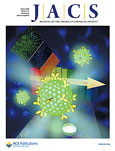
The Journal of the American Chemical Society is a weekly peer-reviewed scientific journal that was established in 1879 by the American Chemical Society. With an impact factor of 16.383 (2022), it is one of the most impactful and prestigious journals in chemistry. The journal has absorbed two other publications in its history, the Journal of Analytical and Applied Chemistry and the American Chemical Journal. It publishes original research papers in all fields of chemistry. Since 2021, the journal is edited by Erick M. Carreira. In 2014, the journal moved to a hybrid open access publishing model.

ChemComm, formerly known as Journal of the Chemical Society D: Chemical Communications (1969–1971), Journal of the Chemical Society, Chemical Communications (1972–1995), is a peer-reviewed scientific journal published by the Royal Society of Chemistry. It covers all aspects of chemistry. In January 2012, the journal moved to publishing 100 issues per year. The current chair of the Editorial Board is Douglas Stephan, while the executive editor is Richard Kelly.
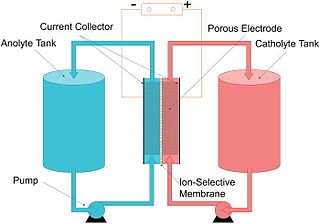
A flow battery, or redox flow battery, is a type of electrochemical cell where chemical energy is provided by two chemical components dissolved in liquids that are pumped through the system on separate sides of a membrane. Ion exchange occurs through the membrane while both liquids circulate in their own respective space. Cell voltage is chemically determined by the Nernst equation and ranges, in practical applications, from 1.0 to 2.43 volts.

American Psychologist is the flagship peer-reviewed academic journal of the American Psychological Association. The journal publishes timely high-impact articles of broad interest. Papers include empirical reports and scholarly reviews covering science, practice, education, and policy. Current editor-in-chief is Harris Cooper, PhD.
BioScience is a monthly peer-reviewed scientific journal that is published by Oxford University Press on behalf of the American Institute of Biological Sciences. It was established in 1964 and was preceded by the AIBS Bulletin (1951–1963).
The lithium iron phosphate battery or LFP battery is a type of lithium-ion battery using lithium iron phosphate as the cathode material, and a graphitic carbon electrode with a metallic backing as the anode. The energy density of an LFP battery is lower than that of other common lithium ion battery types such as Nickel Manganese Cobalt (NMC) and Nickel Cobalt Aluminum (NCA), and also has a lower operating voltage; CATL's LFP batteries are currently at 125 watt hours (Wh) per kg, up to possibly 160 Wh/kg with improved packing technology, while BYD's LFP batteries are at 150 Wh/kg, compared to over 300 Wh/kg for the highest NMC batteries. Notably, the energy density of Panasonic’s “2170” batteries used in 2020 in Tesla’s Model 3 is around 260 Wh/kg, which is 70% of its "pure chemicals" value.
Journal Citation Reports (JCR) is an annual publication by Clarivate Analytics. It has been integrated with the Web of Science and is accessed from the Web of Science-Core Collections. It provides information about academic journals in the natural sciences and social sciences, including impact factors. The JCR was originally published as a part of Science Citation Index. Currently, the JCR, as a distinct service, is based on citations compiled from the Science Citation Index Expanded and the Social Sciences Citation Index.
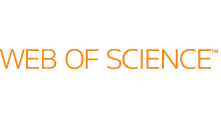
The Web of Science is a paid-access platform that provides access to multiple databases that provide reference and citation data from academic journals, conference proceedings, and other documents in various academic disciplines. It was originally produced by the Institute for Scientific Information. It is currently owned by Clarivate.

Current Biology is a biweekly peer-reviewed scientific journal that covers all areas of biology, especially molecular biology, cell biology, genetics, neurobiology, ecology, and evolutionary biology. The journal includes research articles, various types of review articles, as well as an editorial magazine section. The journal was established in 1991 by the Current Science group, acquired by Elsevier in 1998 and has since 2001 been part of Cell Press, a subdivision of Elsevier. According to Journal Citation Reports, the journal has a 2020 impact factor of 10.834. It was categorized as a "high impact journal" by the Superfund Research Program.

The Journal of Applied Polymer Science is a peer-reviewed scientific journal covering polymer science. The journal covers all applications of synthetic and renewably sourced polymers, including batteries and fuel cells, organic electronics, biomedical implants and drug delivery, coatings and packaging. It also covers composites, blends, elastomers, films and membranes, fibers, emulsions and latices, degradation of polymers, block co-polymers, hydrogels, foams, nanostructured polymers, as well as innovative synthesis and processing techniques. According to the Journal Citation Reports, the journal has a 2020 impact factor of 3.125.
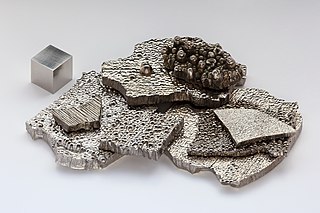
Cobalt is a chemical element with the symbol Co and atomic number 27. As with nickel, cobalt is found in the Earth's crust only in a chemically combined form, save for small deposits found in alloys of natural meteoric iron. The free element, produced by reductive smelting, is a hard, lustrous, silver-gray metal.
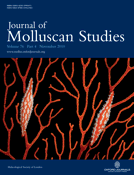
The Journal of Molluscan Studies is the peer-reviewed scientific journal of the Malacological Society of London, covering research in malacology.
The sodium-ion battery (NIB or SIB) is a type of rechargeable battery analogous to the lithium-ion battery but using sodium ions (Na+) as the charge carriers. Its working principle and cell construction are almost identical with those of commercially widespread lithium-ion battery types, but sodium compounds are used instead of lithium compounds.

Clarivate is an American publicly traded analytics company that operates a collection of subscription-based services, in the areas of bibliometrics and scientometrics; business / market intelligence, and competitive profiling for pharmacy and biotech, patents, and regulatory compliance; trademark protection, and domain and brand protection. In the academy and the scientific community, Clarivate is known for being the company which calculates the impact factor, using data from its Web of Science product family, that also includes services/applications such as Publons, EndNote, EndNote Click, and ScholarOne. Its other product families are Cortellis, DRG, CPA Global, Derwent, MarkMonitor, CompuMark, and Darts-ip, and also the various ProQuest products and services.















